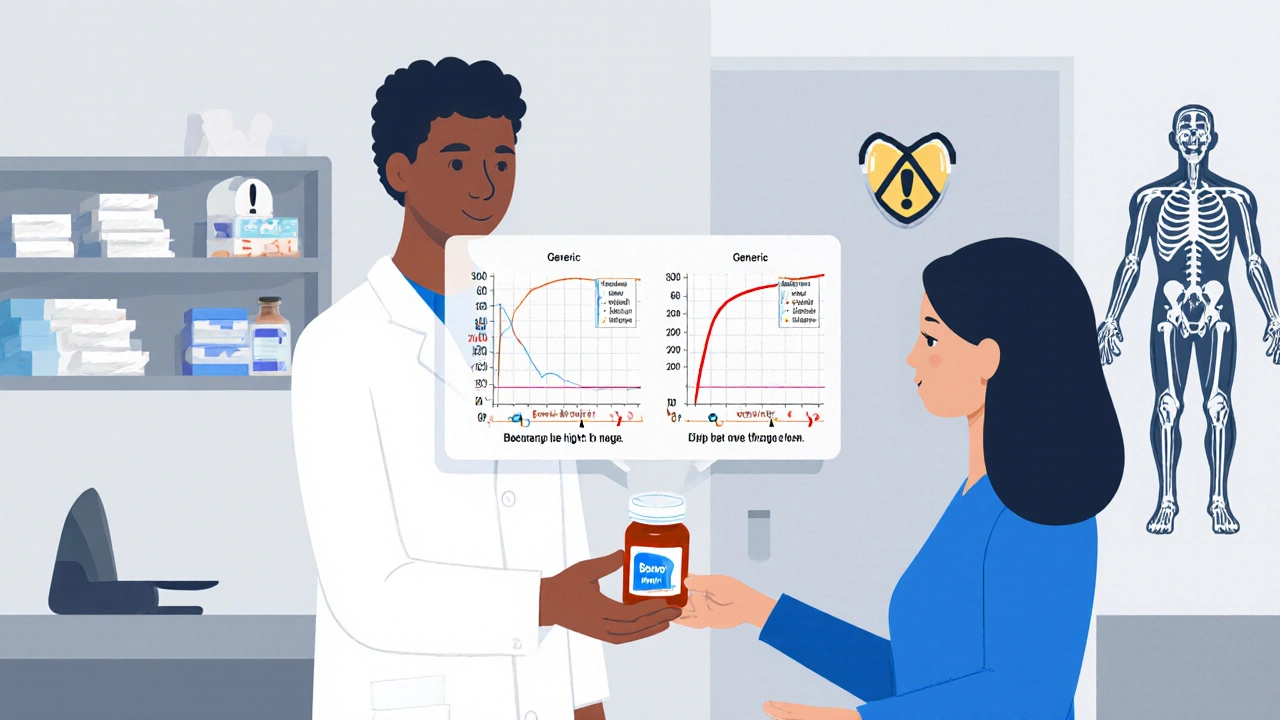When you take a medication with a narrow therapeutic index, a type of drug where the difference between a helpful dose and a toxic one is very small. Also known as NTI drugs, these medications require careful handling because even a slight overdose—or underdose—can lead to serious side effects or treatment failure. This isn’t just a technical detail. It’s a life-or-death factor for people taking drugs like warfarin, digoxin, or lithium. Unlike most pills where you can skip a dose or adjust slightly without consequence, NTI drugs demand precision. One milligram too much might send you to the hospital. One milligram too little could let your condition spiral out of control.
NTI drugs are often used for serious or chronic conditions: heart rhythm problems, seizures, organ rejection after transplant, or severe mental health disorders. That’s why they’re frequently prescribed—because they work. But their power comes with high risk. These drugs interact with food, other meds, and even changes in your liver or kidney function. For example, switching from one brand of warfarin to another—even if the dose looks the same—can throw your INR levels off. Or taking an antibiotic like clarithromycin while on digoxin can cause dangerous heart rhythms. That’s why doctors often monitor blood levels closely, especially when starting or changing these drugs. It’s not overcaution. It’s necessary.
What makes NTI drugs different from other medications? It’s the therapeutic window, the range between the minimum effective dose and the minimum toxic dose. For most drugs, this window is wide. For NTI drugs, it’s razor-thin. That’s why you’ll see warnings in your prescription label about avoiding certain foods, checking lab results regularly, or never switching brands without your doctor’s approval. Even something as simple as a change in your diet or starting a new supplement can interfere with how your body processes these drugs. And if you’re on multiple medications—like an anticoagulant and an antidepressant—you’re at higher risk for dangerous interactions. That’s why posts here cover topics like MAOIs and cold medicines, fluoroquinolones and NSAIDs, or levodopa and antipsychotics. These aren’t random drug comparisons. They’re real-world examples of how easily things can go wrong when NTI drugs are involved.
You don’t need to be a pharmacist to stay safe with NTI drugs. But you do need to be informed. Know your meds. Ask your doctor if what you’re taking has a narrow therapeutic index. Keep a list of all your drugs and supplements. Don’t stop or start anything without checking first. And if you notice unusual symptoms—dizziness, nausea, irregular heartbeat, confusion—don’t wait. These could be early signs your dose is off. The posts below give you real, practical advice on how to navigate these risks. You’ll find guides on reading FDA labels, understanding drug interactions, and spotting warning signs before they become emergencies. This isn’t theory. It’s what keeps people out of the ER.

Therapeutic Drug Monitoring is critical for patients on generic narrow therapeutic index (NTI) drugs, where small changes in blood levels can cause toxicity or treatment failure. Learn when and why TDM saves lives.